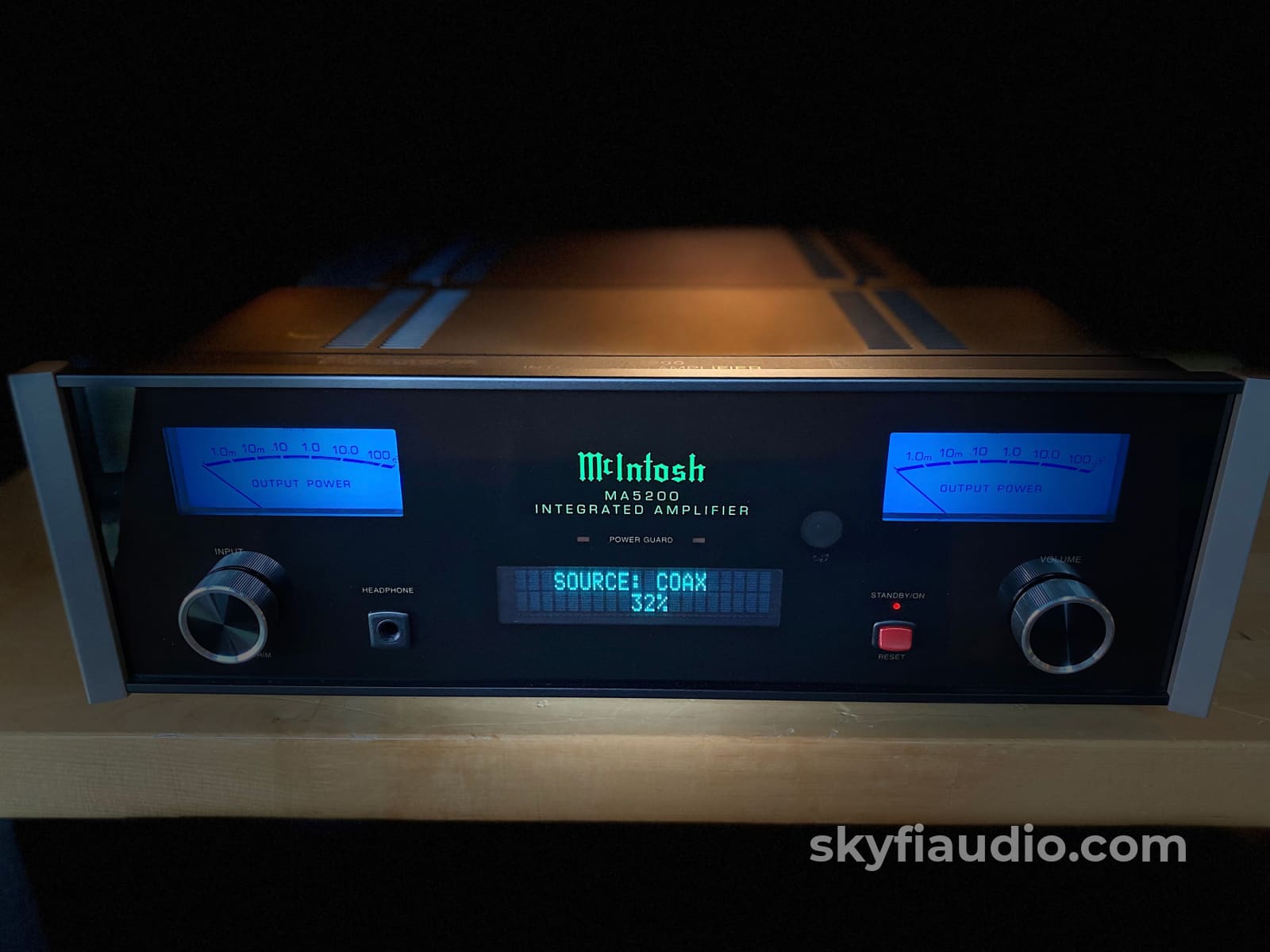
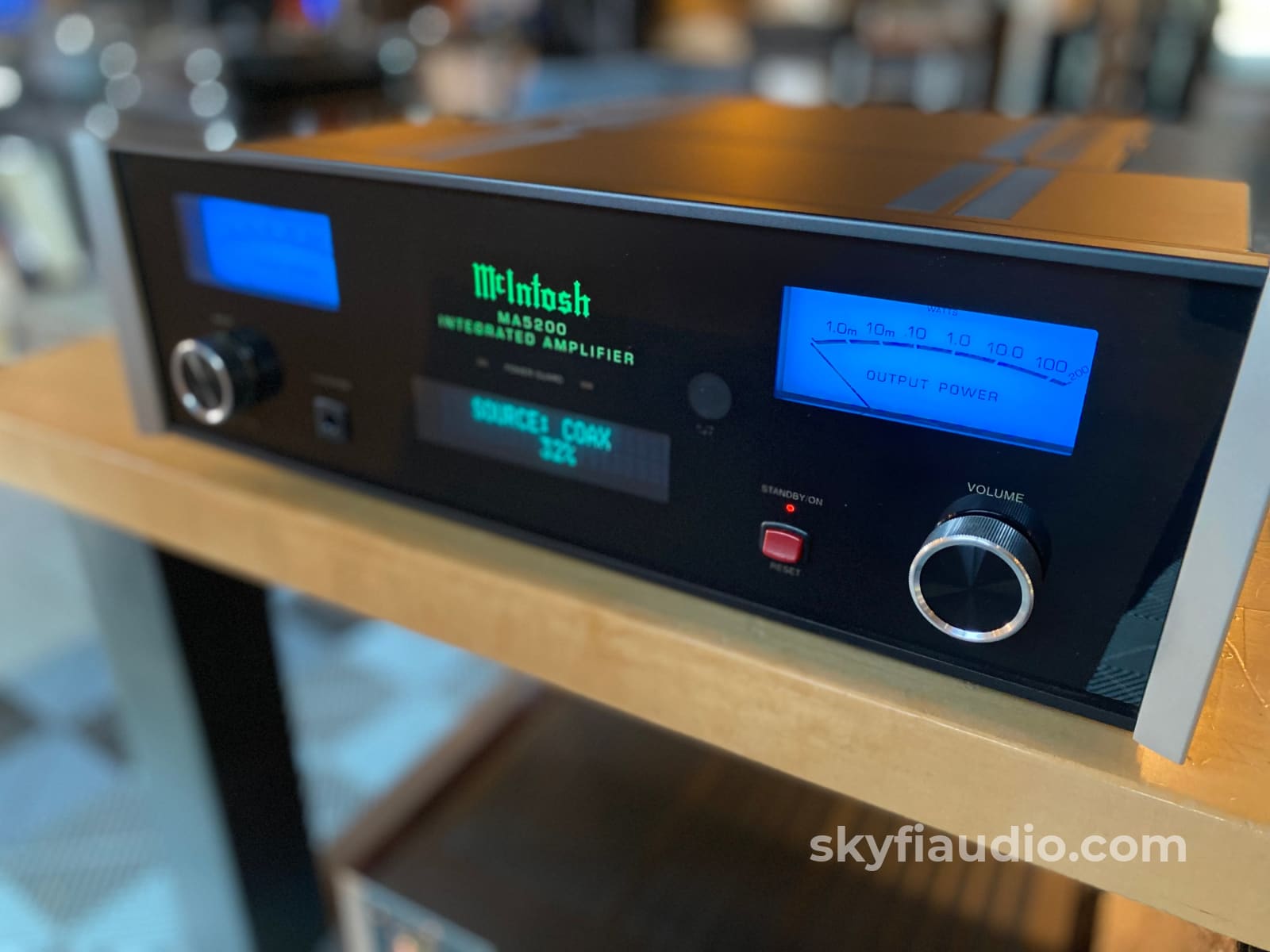
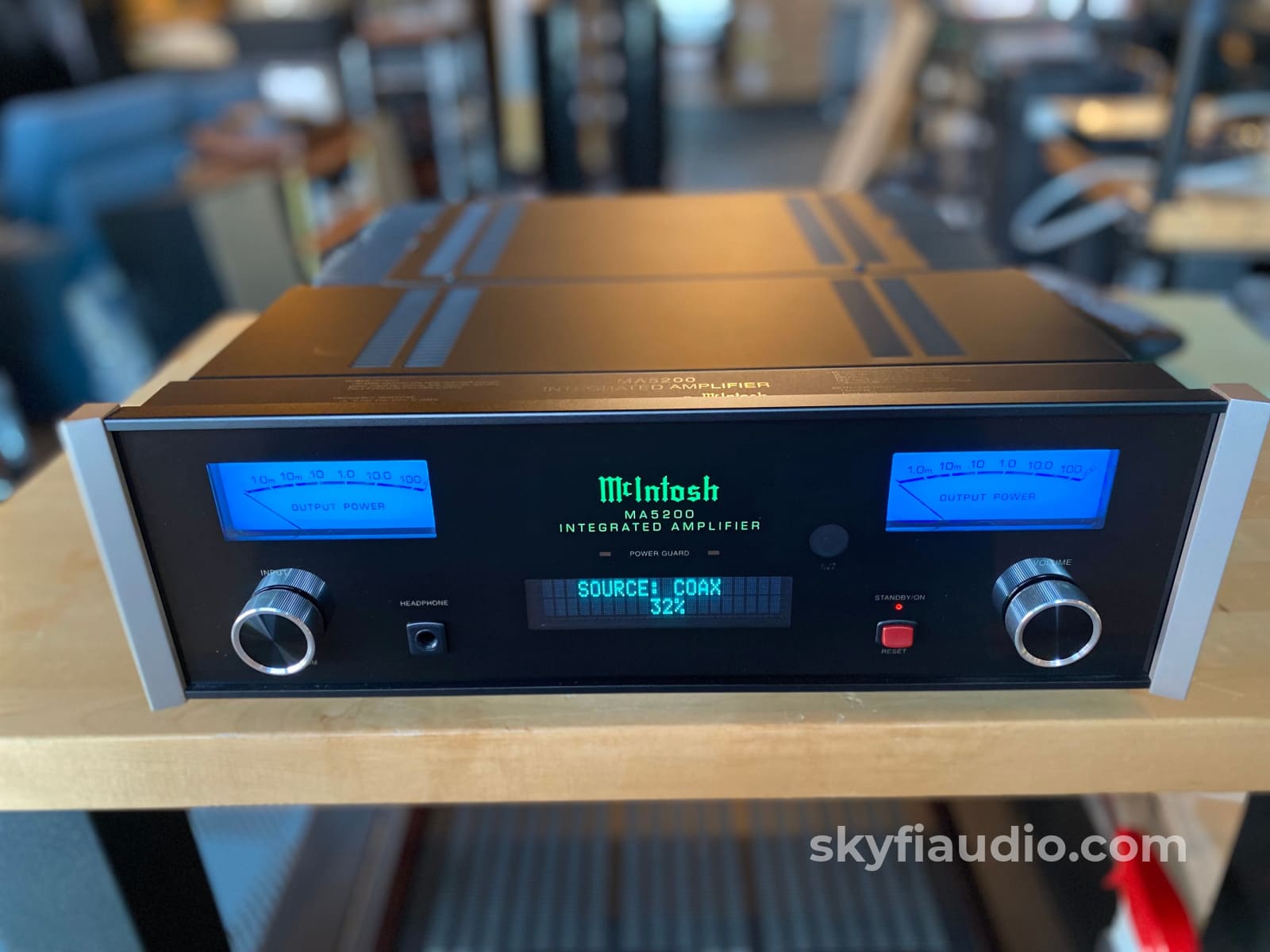
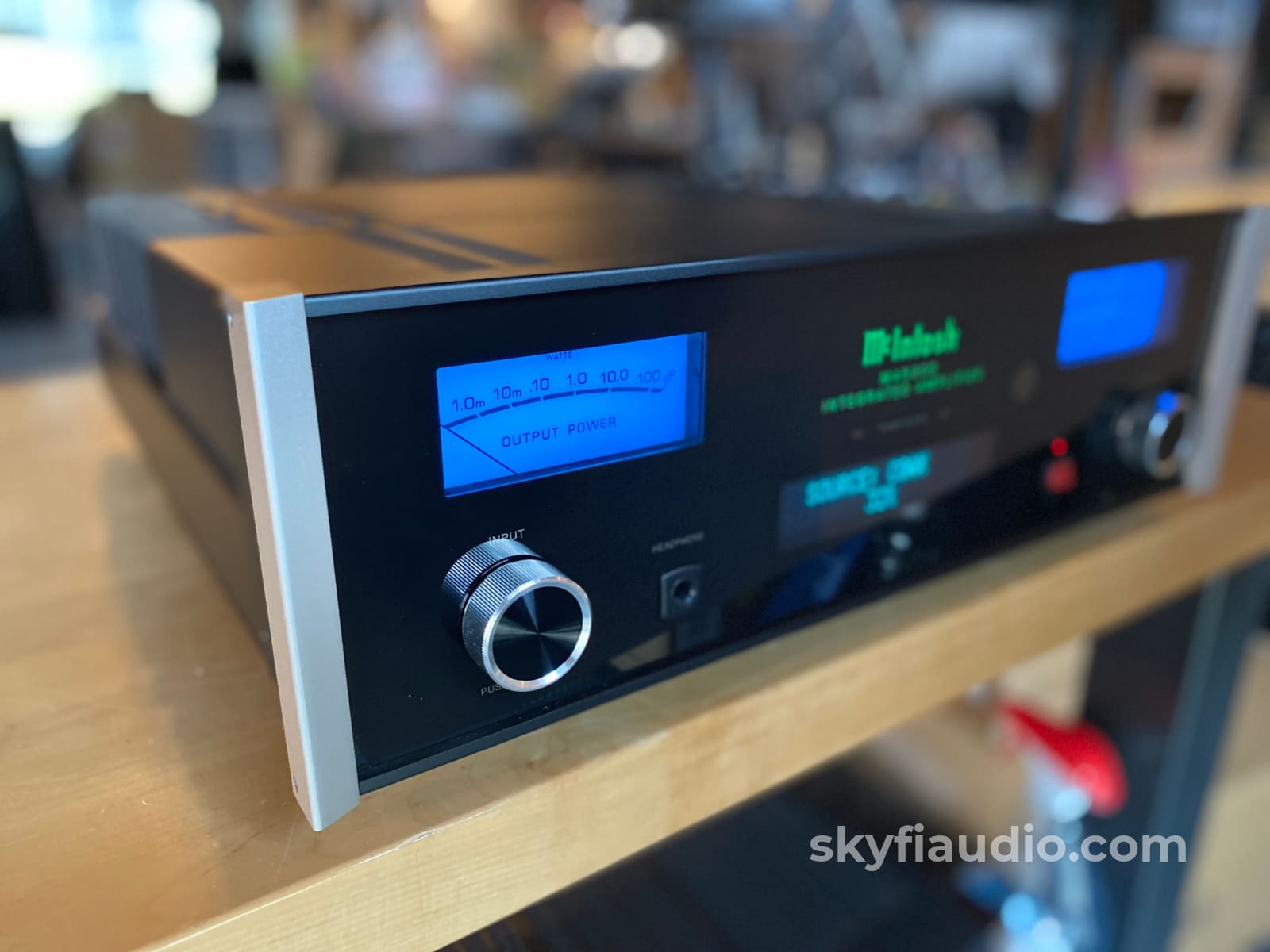
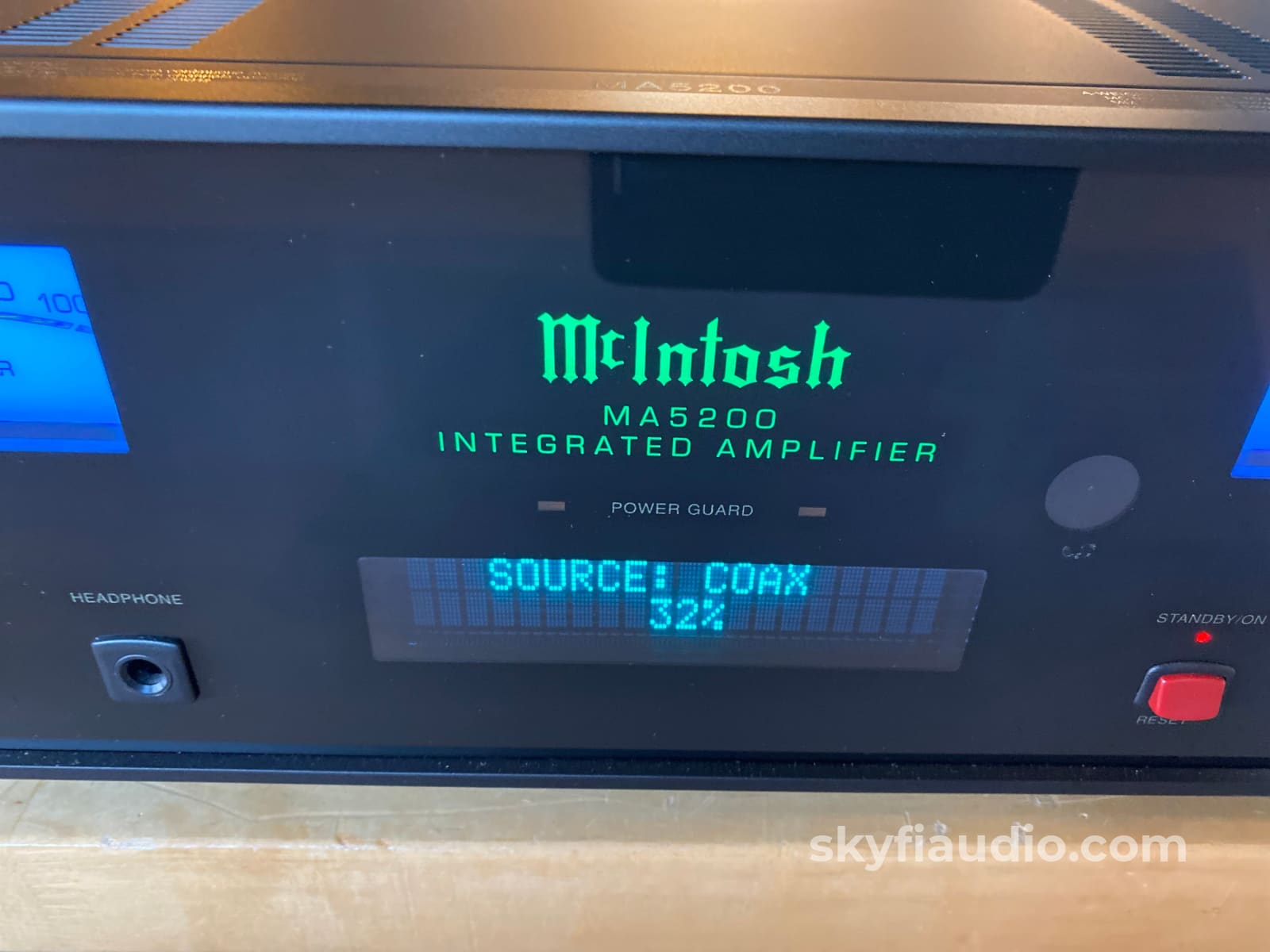
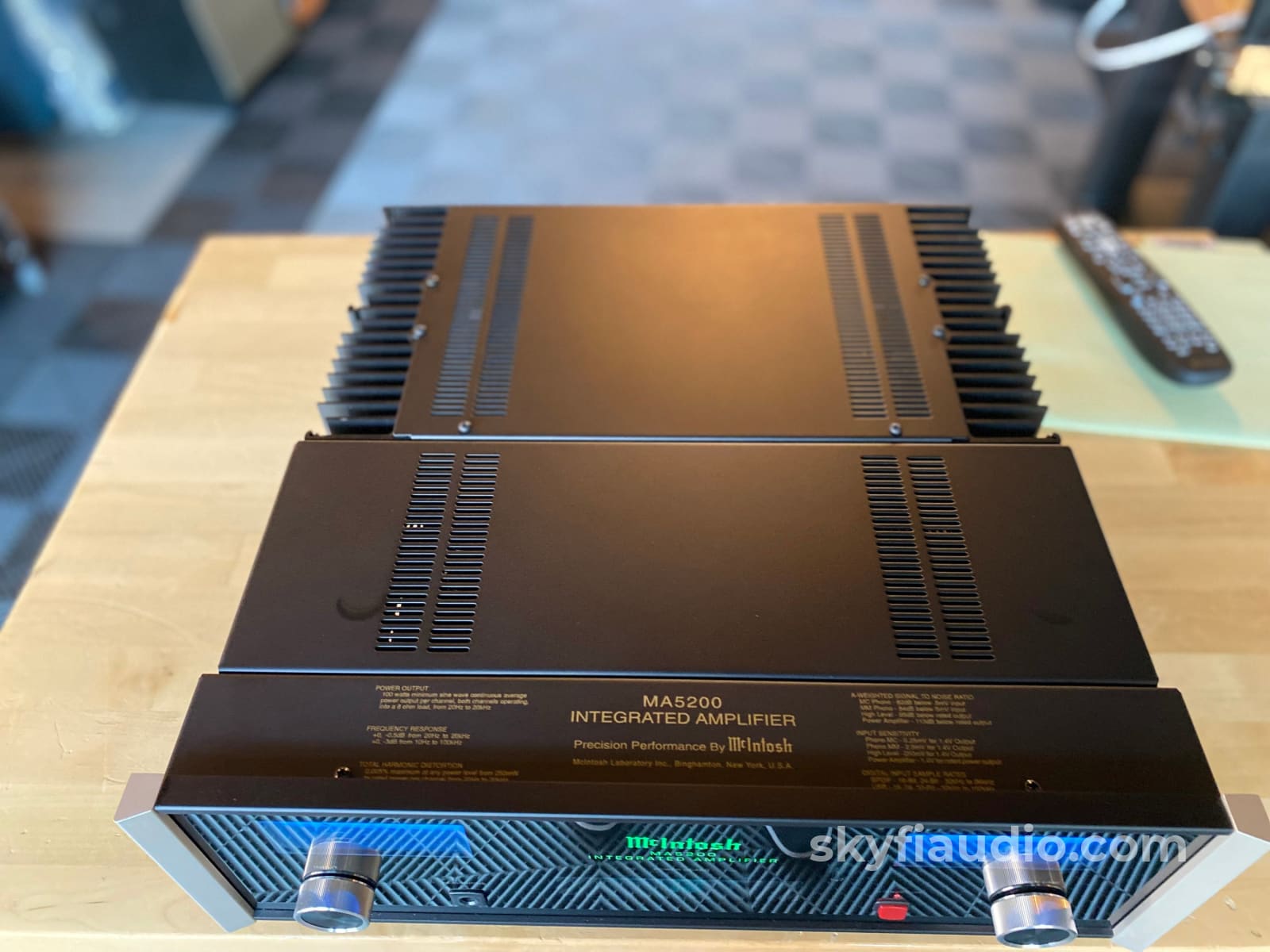
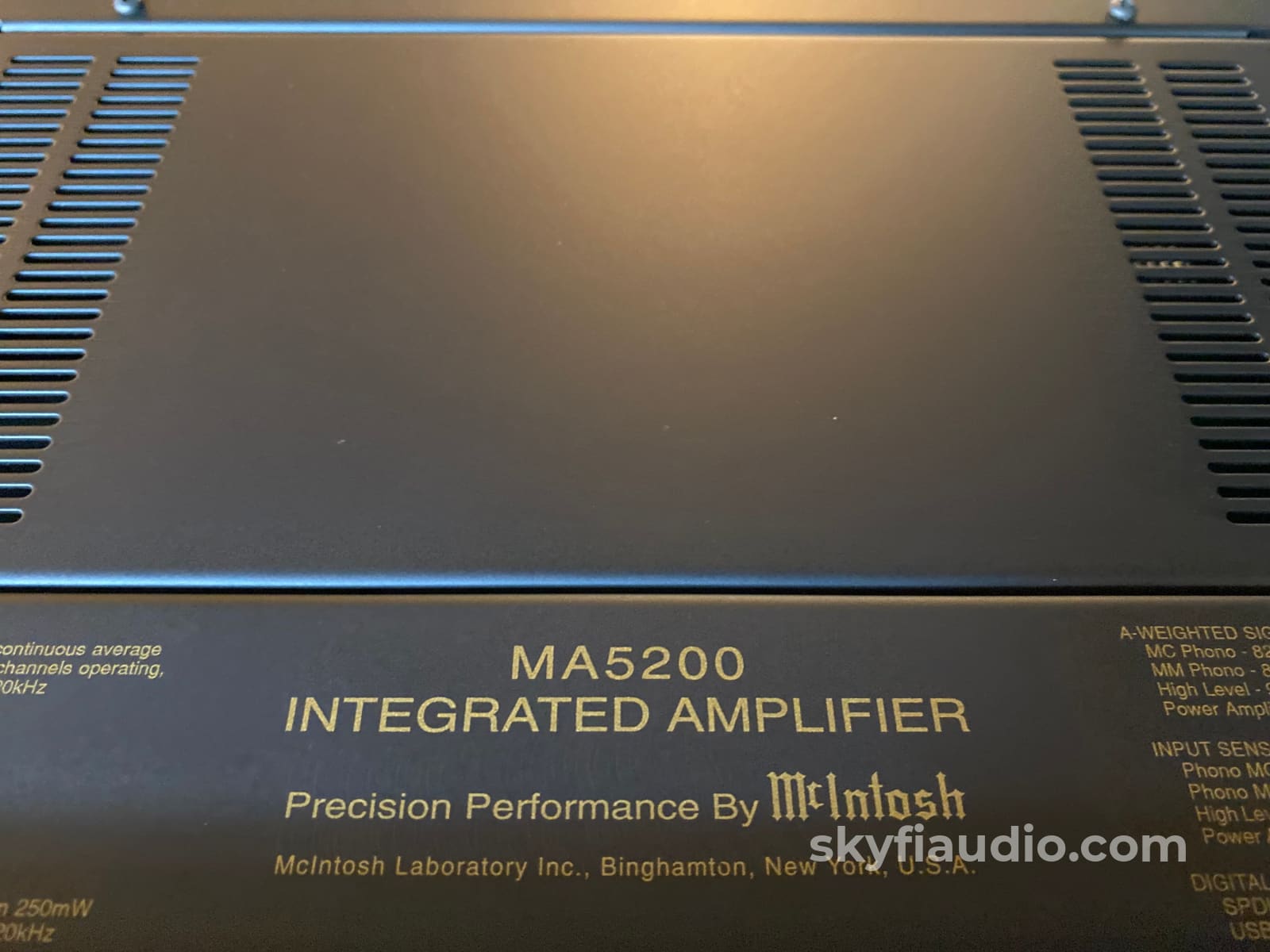
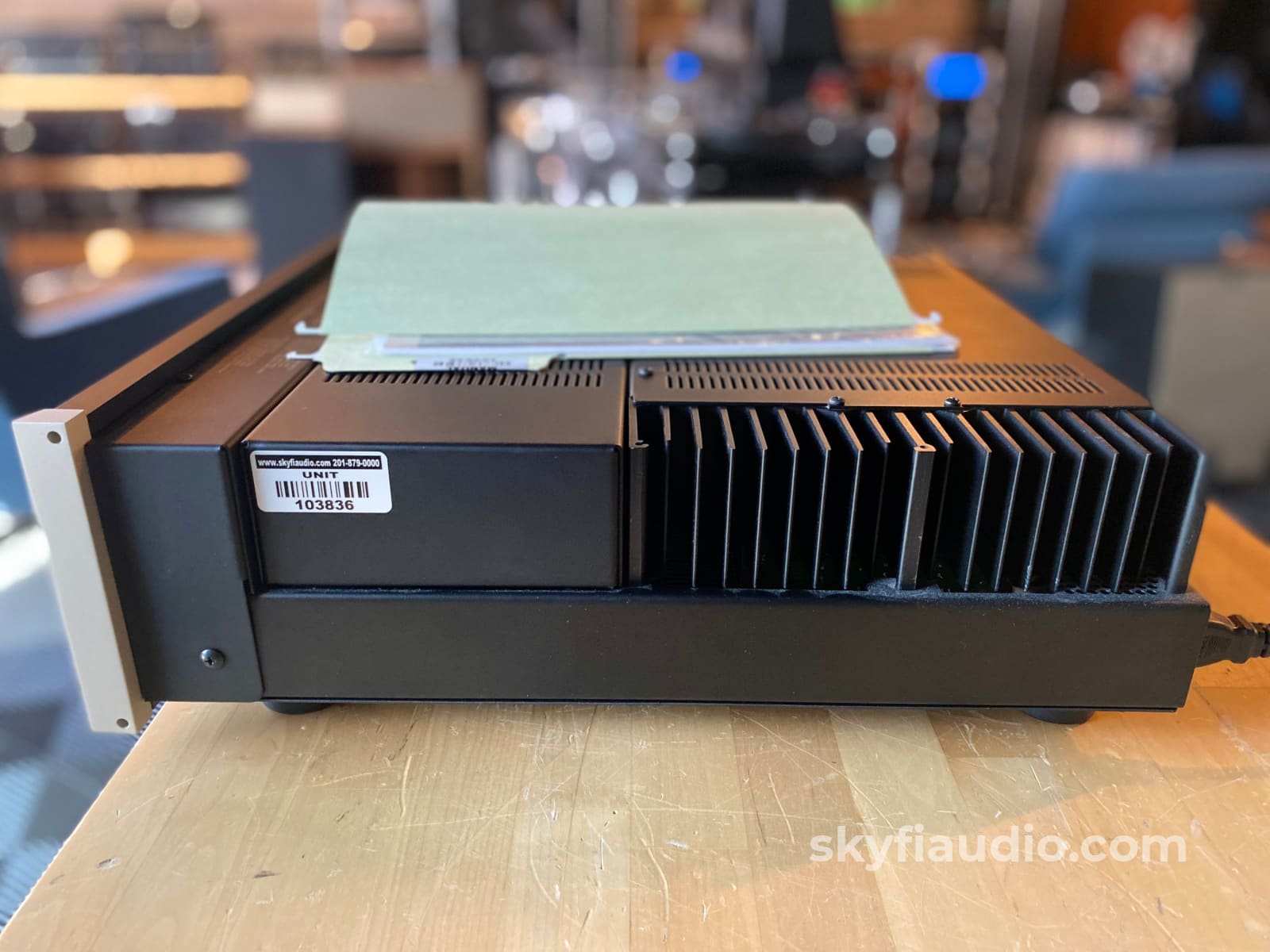
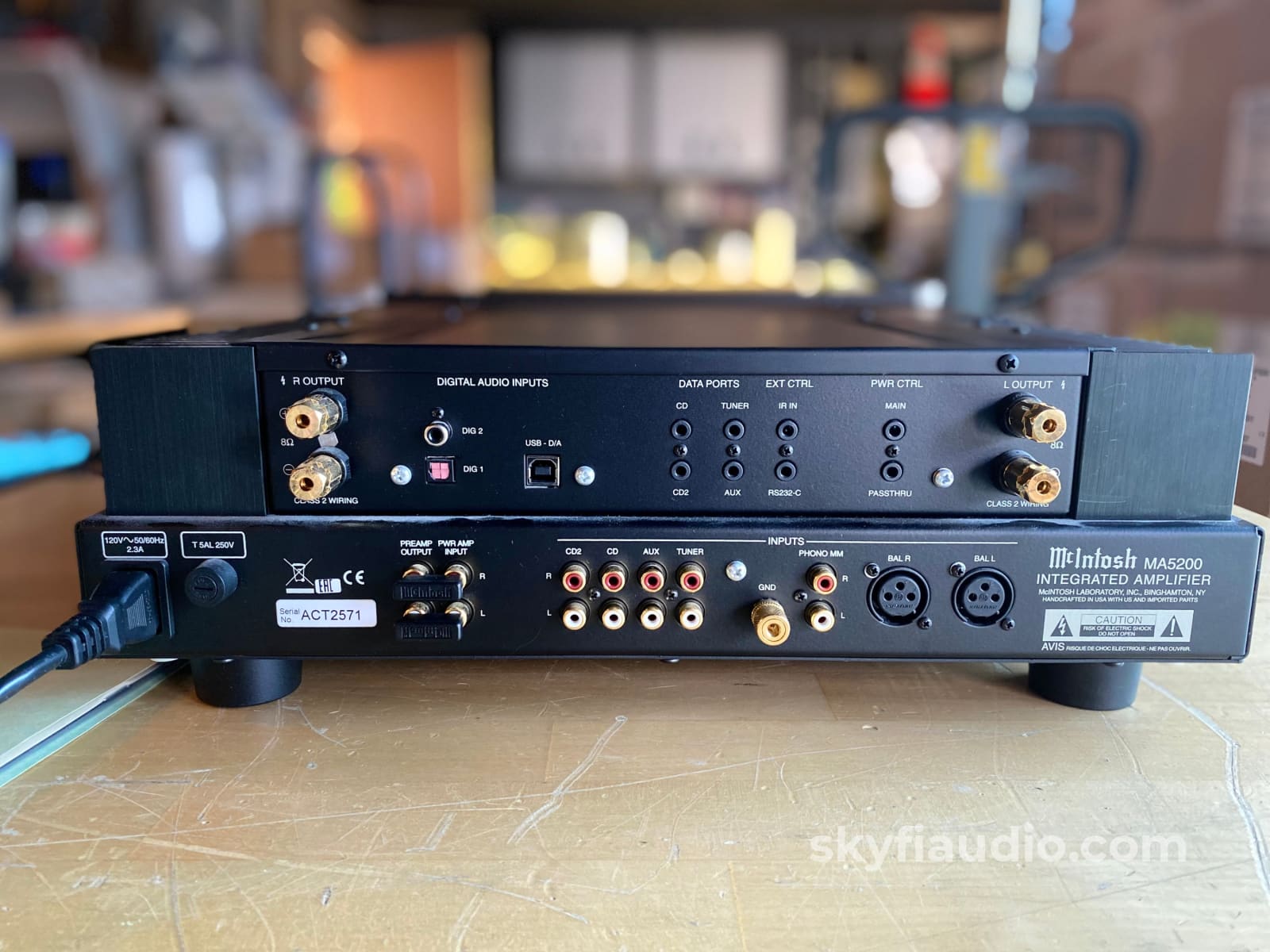
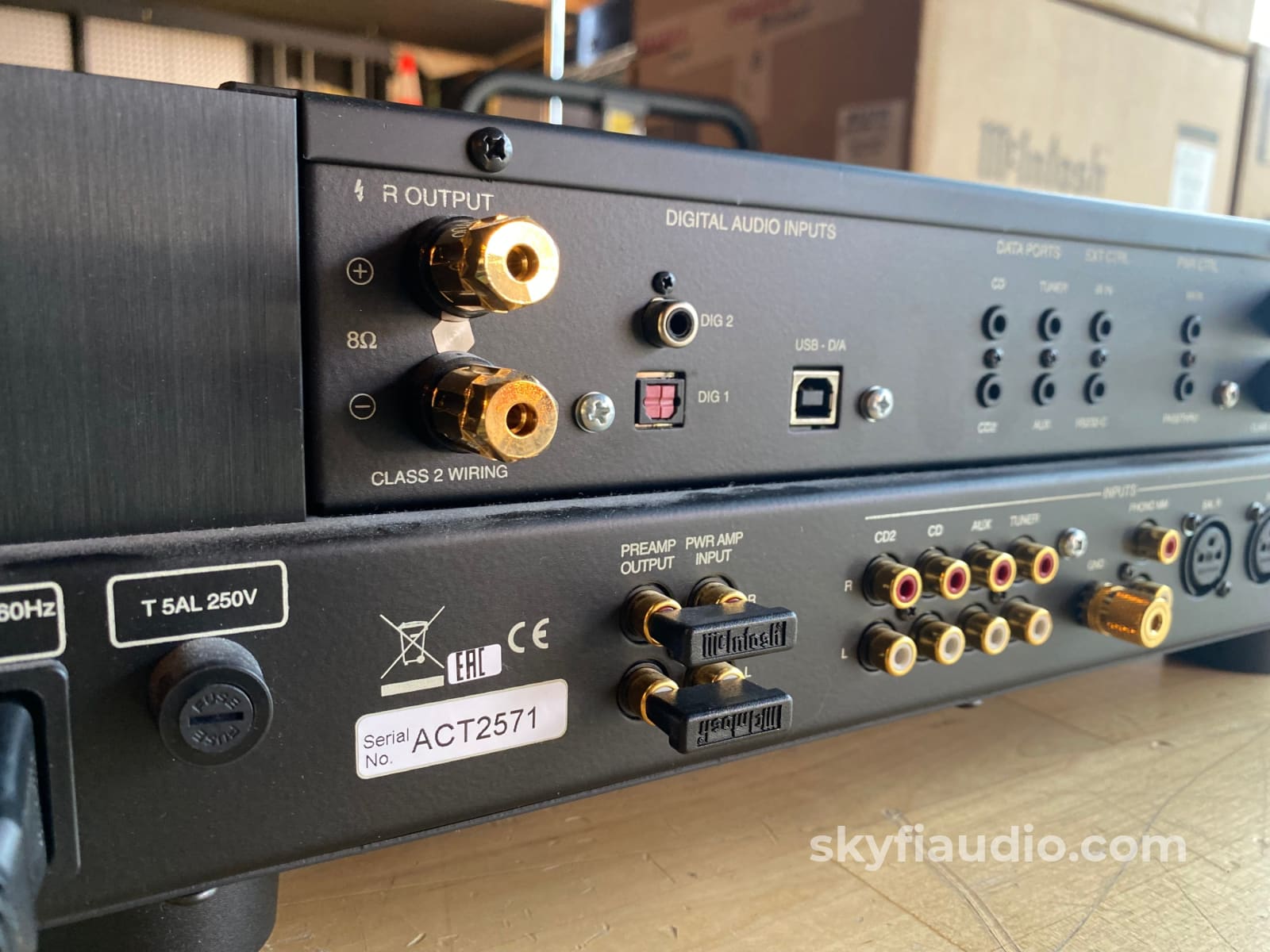
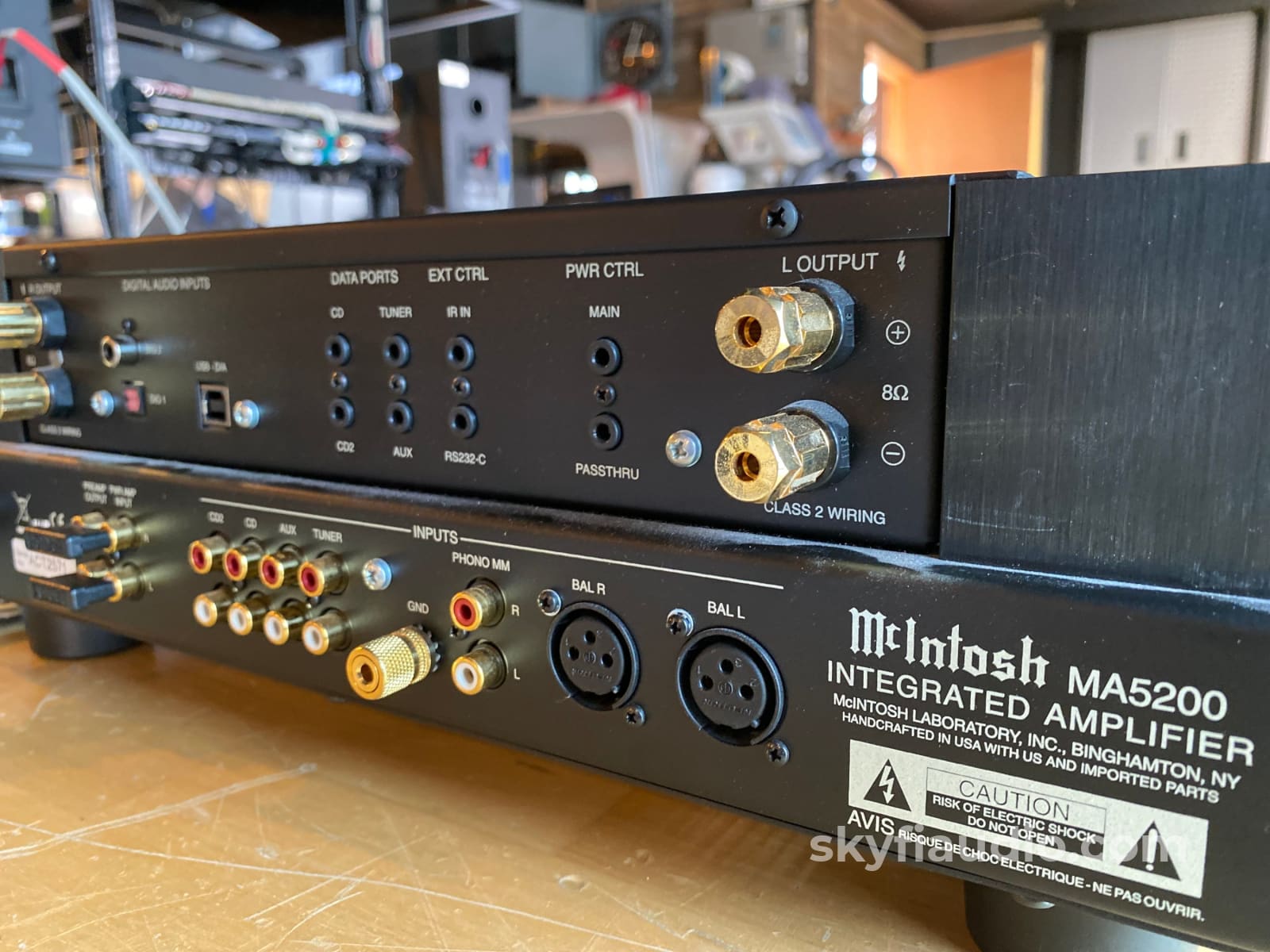
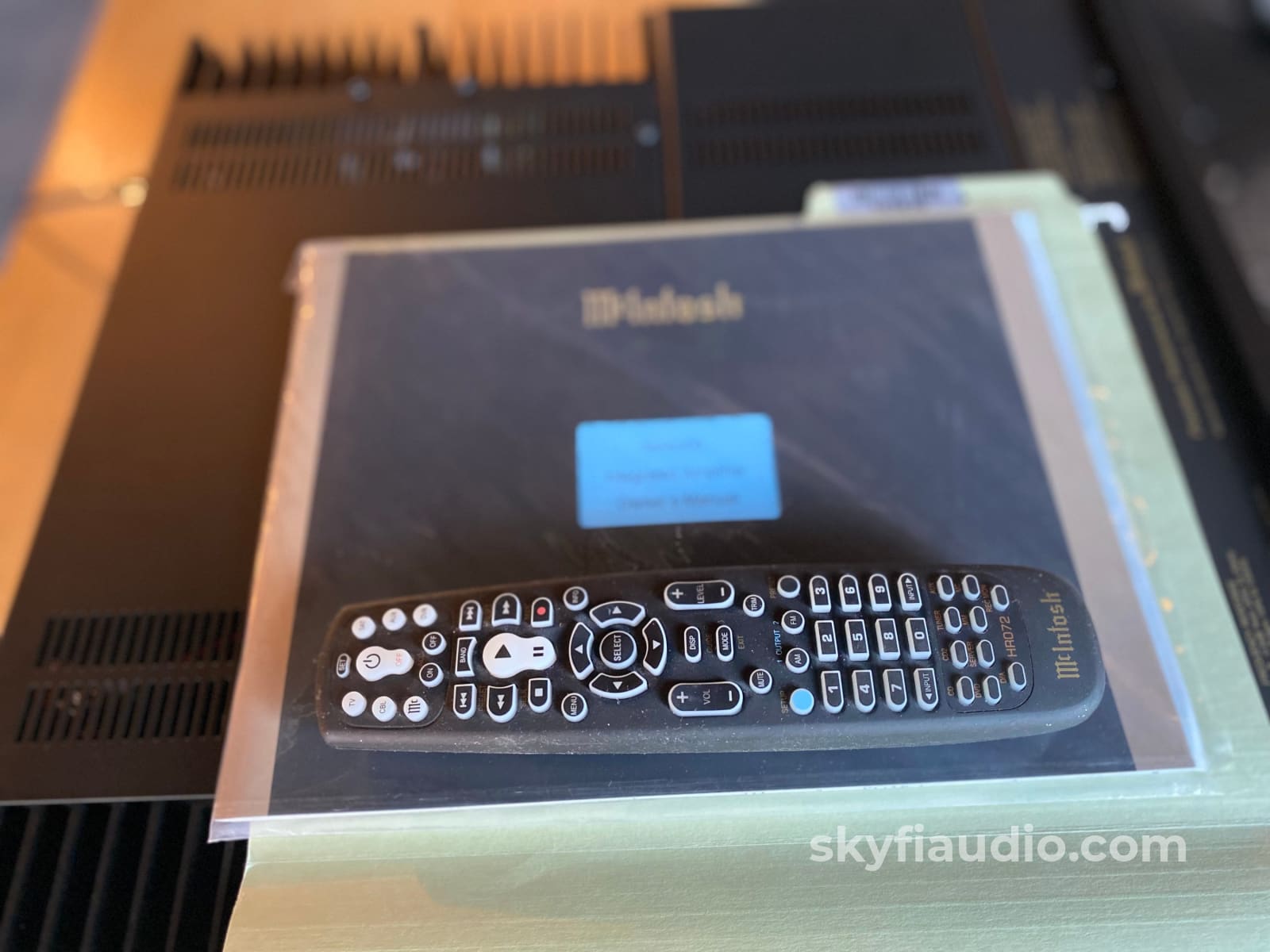
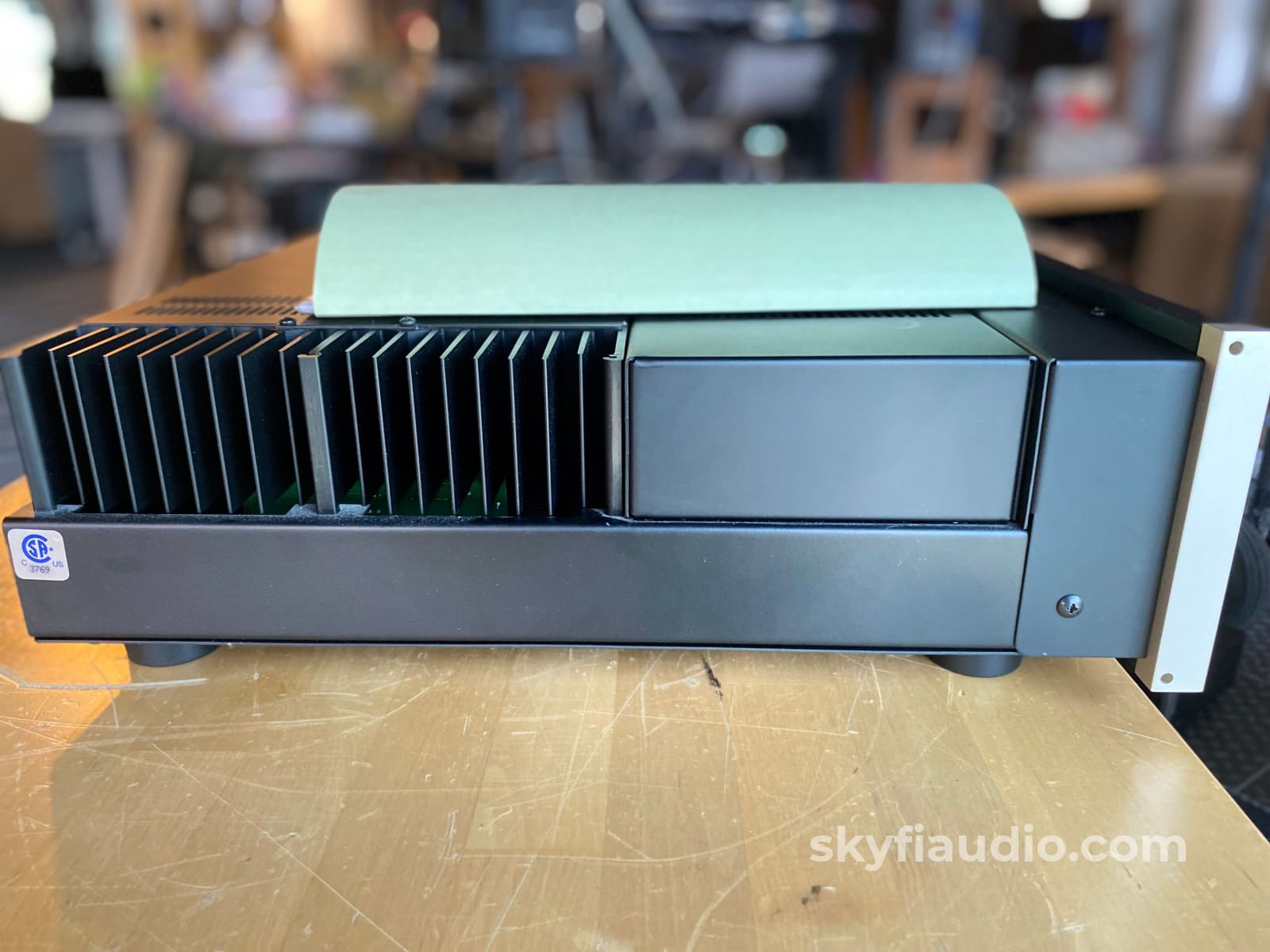
McIntosh MA5200 Integrated Amplifier - Like New and Complete
Free Shipping on Most Electronics - Excludes Speakers and Items Requiring Freight - Contiguous U.S. Only
Pickup currently unavailable at SkyFi 479

McIntosh MA5200 Integrated Amplifier - Like New and Complete
SkyFi 479
479 South Broad Street
Glen Rock NJ 07452
United States
Full featured entry level integrated amplifier from McIntosh with plenty of power and great sound.
100W into 8 ohms, but actually puts more like 130W with 0.005% distortion.
Great headphone amp built-in capable of driving the best headphones without additional equipment.
Video from the Legendary Ken Zelin, McIntosh Global Training Manager:
In very good condition with no signs of use except the remote which often deteriorates over time (not from use).
Also includes McIntosh carton, Owner's Manual, and a Power Cord.
The current model MA5300 is identical except it features a removable DAC module and will set you back $6k.
More from McIntosh:
- MA5200 delivers the full McIntosh audio experience in a sleek, compact size. Simply add your favorite speakers and audio sources to create a complete system.
- MA5200’s 100 watts per channel is the perfect size for modestly sized listening spaces. The classic blue power level meters indicate the world famous McIntosh amplifier performance.
- The McIntosh Digital Engine will decode your digital music at up to 32 bits and 192kHz, delivering McIntosh analog sound quality.
- The MA5200’s built in headphone amplifier is designed to power all headphone types, both in ear and over ear styles. Speaker outputs may be muted during headphone playback.
Amplifier Power Output:
100 watts per channel with both channels operating into 8 Ohms, with Power Meters
Total Harmonic Distortion:
0.005% maximum from 20Hz to 20kHz
Preamplifier Inputs:
Four high level unbalanced One high level balanced One Phono: Moving Magnet Three digital inputs
Digital Section:
Three digital inputs: one dedicated USB, and two assignable: one coax and one optical PCM
McIntosh Digital Engine is 32 bit 192kHz, USB 2.0 asynchronous
High Drive Headphone Amplifier:
All headphones, from 20 to 600 Ohms
HomeTheater PassThrough:
Allows interfacing with a Home Theater system
Overall Dimensions (W x H x D):
17-1/2” (44.5cm) x 6” (15.24cm) x 22” (55.88cm) including knobs, connectors and cables
Weight:
37 lbs (16.8kg) net,
55 lbs (24.9kg) in shipping carton
Brochure:
Manual:
Recommended Cables:
Kimber Kable - RCA Interconnects - Better
Kimber Kable - Phono Interconnects - Better
Kimber Kable - BALANCED XLR Connectors - Better
Kimber Kable - Digital AES/EBU (XLR Connector) Interconnect
Kimber Kable - Coaxial Digital Interconnect
Kimber Kable - Optical Digital Interconnect
Kimber Kable - Select Series Reference USB Cable
Kimber Kable - Speaker Cables - Better
Kimber Kable - Power Cords - Better
The SkyFi Testing Process for Preamplifiers:
We start with a visual inspection of all internal components to make sure that there are no signs of heat stress or damage. Capacitors are checked for telltale signs of predictive failure including bulging, shrunken wrappers, or physical leakage. We also inspect the PCB’s for discoloration from resistors or transistors that may have been running hot. On vintage units we often spot check select capacitors for value and ESR.
When we first power on a preamplifier we connect its RCA output to a Sencore PA81 Power Analyzer which simulates real world loading conditions and gives us an oscilloscope interface. The first order of business is checking that the volume control works smoothly throughout its entire range with acceptable channel balance. This is accomplished by feeding a 1KHz sine wave into one of the preamp’s line level inputs while monitoring the preamp’s output on an oscilloscope. We then switch to a 1KHz square wave to test the tone controls, loudness function, and filters where applicable. During this step we are watching for equal alteration of the test signal by both channels. This also helps us identify dirty controls that will need treatment. Once the basic line stage functions are verified, we test each input individually. This is especially important for devices that use relays to select their sources. If the preamp is equipped with a phono stage we test that as well. We use an inverse RIAA filter which allows us to feed a reference test signal into the phono input with the proper RIAA equalization and level. A square wave or sine sweep is used to verify that the device’s phono stage is faithfully reproducing the RIAA curve. If the preamp under test has balanced inputs and/or outputs these are tested as well.
We finish up our bench testing with a listening test with our bench amplifier and reference speakers. During this test we check for hum or hiss that may not have shown up in earlier testing. We also check that all of the tone controls and filters perform as expected. If the preamplifier has remote control functions these are also tested. Preamps with tube circuits or complicated power supply topologies are connected at our long term test rig for extended stress testing under real world conditions.
The SkyFi Testing Process for Solid State Amplifiers:
We start with a visual inspection of all internal components to make sure that there are no signs of heat stress or damage. Capacitors are checked for telltale signs of predictive failure including bulging, shrunken wrappers, or physical leakage. We also inspect the PCBs for discoloration from resistors or transistors that may have been running hot. On vintage units we often spot check select capacitors for value and ESR.
If the amplifier passes visual inspection, we move on to a controlled power on sequence using a Sencore safety analyzer to monitor current draw in real time. Once the amplifier is determined to be safe to operate, we connect it to full AC mains for function and power testing. We connect the speaker outputs of the amplifier to a Sencore PA81 Power Analyzer which acts as a dummy load, DC offset monitor, and oscilloscope interface. We start with a low level 1KHz test signal at the amplifier’s input and slowly increase its amplitude while monitoring the output on an oscilloscope for signs of noise, clipping, distortion, or improper channel balance. We continue increasing the signal level until the amplifier reaches clipping. At this point we take an output power measurement and compare it to the spec sheet of the amplifier to verify proper performance. If the device under test has both balanced and single ended inputs they are both tested at this time. We finish off the bench evaluation with a 1KHz square wave check and a 20Hz to 20KHz sine sweep to assess the amplifier’s frequency response characteristics. This battery of tests will usually reveal if the amplifier has any issues that need further attention.
Before the device leaves the bench, we perform a listening test with actual music using a variety of preferred test tracks. Our benches are outfitted with familiar monitor speakers which help us identify inconsistencies that will not always show up on our test gear. The main things that we are listening for are hum or noise with no signal present, proper center image, clicks, pops, or any other obvious undesirable audio characteristics.
If the unit passes all of these tests it is moved to our long term testing rig where we simulate real word operating conditions for 6-8 hours. This allows us to monitor the unit for signs of thermal runaway or intermittent issues that only crop up when the unit has fully come up to temperature.
|
Item |
Included |
|
McIntosh Carton |
Yes Included |
|
Manual |
Yes Included |
|
Remote |
Yes Included |
|
Cables |
Yes - Power Only |
|
Physical Condition (Info Here) |
8 / 10 |
|
Working Condition |
10 / 10 |
Choose options













